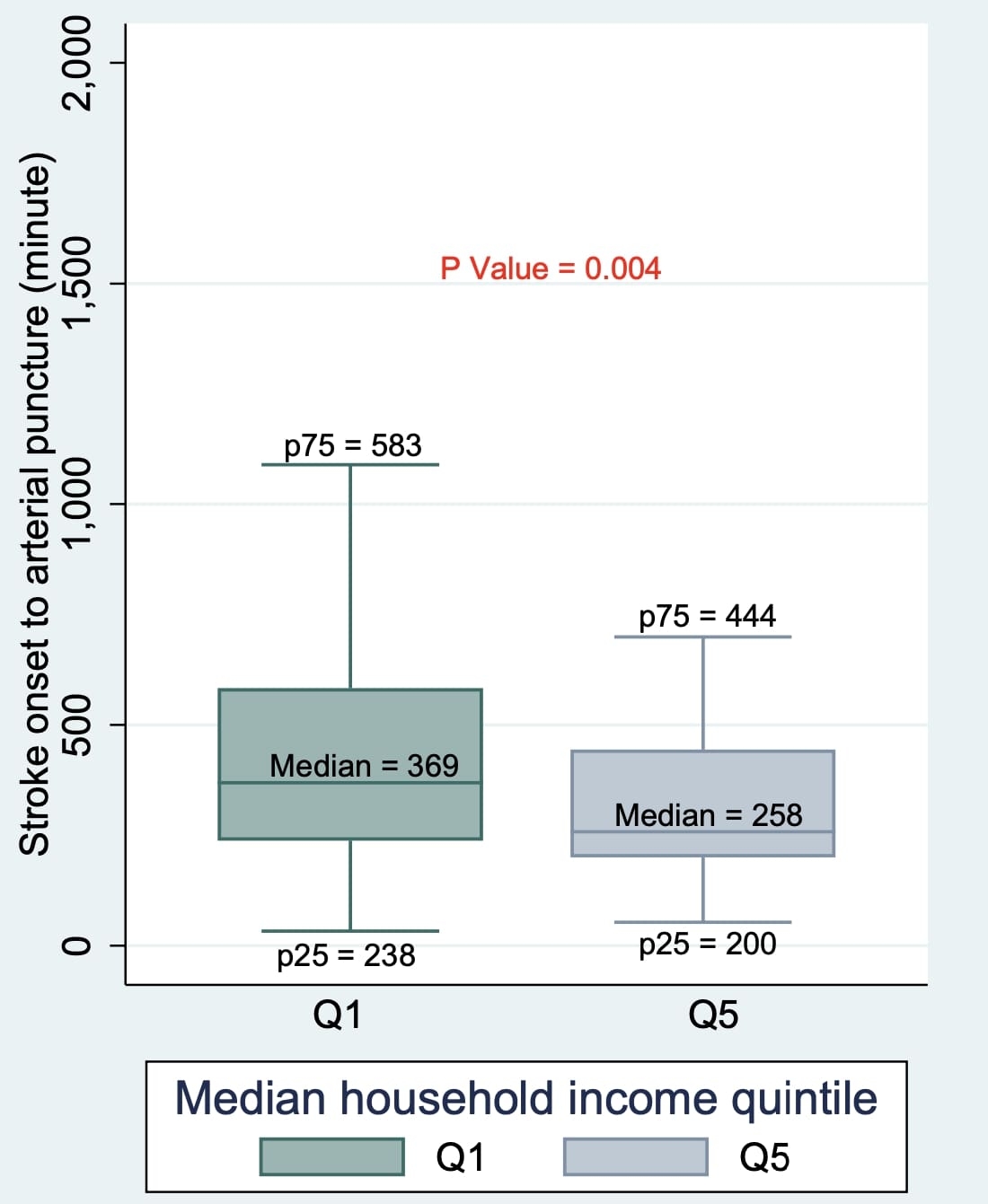Final ID: WP158
Socioeconomic Influences on Stroke Outcomes: A Comprehensive Zip Code-Based Hospital Analysis
Methods: This study is a retrospective analysis based on a prospectively maintained database of 697 patients who underwent mechanical thrombectomy between 2016 and 2023. ZIP codes were retrospectively added to the database to determine socioeconomic status (SES). SES was assessed by matching patient ZIP codes to median household income data from the Census for the years 2016-2022. Baseline characteristics, stroke characteristics, procedural details, and outcomes were collected. Patients were stratified into income quintiles (Q1: $14,658–$52,635; Q2: $52,905–$64,046; Q3: $64,140–$77,737; Q4: $78,449–$95,128; Q5: $95,231–$217,674). Multivariate regression was conducted to identify predictors of good functional outcomes (mRS 0-2).
Results: The study included 697 patients representing 270 zip codes mostly from the states of Pennsylvania and New Jersey, distributed across income quintiles as follows: Q1 (n = 140), Q2 (n = 142), Q3 (n = 138), Q4 (n = 138), and Q5 (n = 139). Significant racial differences were observed between income quintiles, with a higher proportion of African-American patients in Q1 (40.7%) compared to Q5 (19.9%; p < 0.001), and more white patients in Q5 (82.7%) compared to Q1 (47.1%; p < 0.001). The Onset to arterial puncture time was longer in Q1 (369 minutes) compared to Q5 (258 minutes; p = 0.004). There were no significant differences in stroke outcomes such as successful recanalization (TICI 2b-3), hemorrhagic transformation, median NIHSS score on discharge, 30-day readmission, disposition to home, or length of stay between Q1 and Q5. SES was not a significant predictor of good functional outcomes (mRS 0-2).
Conclusion: This study found no significant differences in stroke outcomes between low SES and high SES patients undergoing mechanical thrombectomy for acute ischemic stroke. Patients from higher SES had a shorter duration from stroke onset to arterial puncture, and there was a tendency though not significant for higher SES patients to have a higher rate of 30-day readmission, and higher rate of discharge to home. Further research is needed to confirm.
More abstracts on this topic:
Xu Xiaohong, Preeti Preeti, Yu Ruoying, Shaykhalishahi Hamed, Zhang Cheng, Shen Chuanbin, Li Bei, Tang Naping, Chang Yan, Xiang Qian, Cui Yimin, Lei Xi, Ni Heyu, Zhu Guangheng, Liu Zhenze, Hu Xudong, Slavkovic Sladjana, Neves Miguel, Ma Wenjing, Xie Huifang
10-Year Trends in Last Known Well to Arrival Time in Acute Ischemic Stroke Patients: 2014-2023Ferrone Nicholas, Sanmartin Maria, O'hara Joseph, Jimenez Jean, Ferrone Sophia, Wang Jason, Katz Jeffrey, Sanelli Pina
Readers' Comments
We encourage you to enter the discussion by posting your comments and questions below.
Presenters will be notified of your post so that they can respond as appropriate.
This discussion platform is provided to foster engagement, and simulate conversation and knowledge sharing.
You have to be authorized to post a comment. Please, Login or Signup.

